The Art of Emissions Monitoring and Sampling

The comprehensive new range is ideal for maintaining combustion equipment across residential, commercial and industrial applications.
The art of emissions monitoring and sampling requires:
• An understanding of your application
• An assessment of the needs you are trying to meet
• Asking relevant questions to experienced emissions measurement engineers
• Implementing the protections and specially designed accessories for your application
Once the criteria for monitoring have been identified, a monitoring strategy can be implemented that will meet your particular application goals.
Understanding the Mechanisms for Gas Sampling
Maintaining gas integrity is critical for ensuring an accurate emissions reading, but understanding proper sampling techniques for each application is necessary for achieving that goal. The mechanism for gas sampling, including a breakdown of the five critical component steps and application considerations, follow.
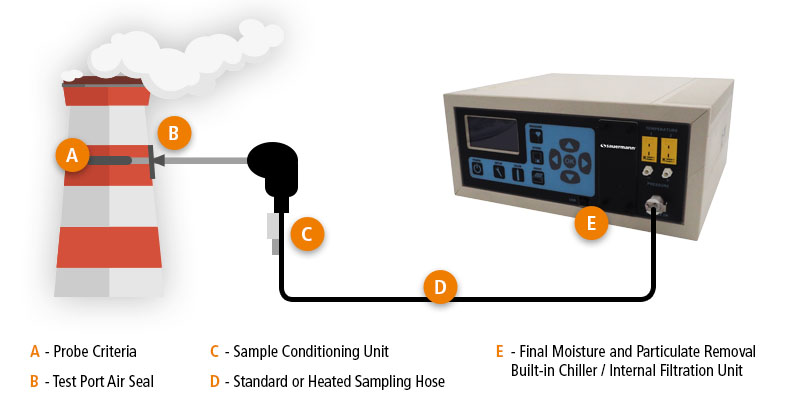
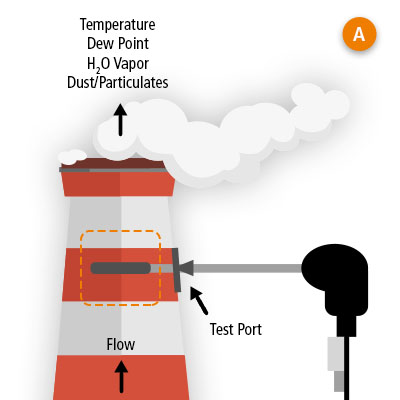
A. Probe Criteria
The criteria for the optimal probe implementation for acquiring a representative gas sample include:
-
Correct Sampling Probe – Identifying the correct sampling probe for your application will depend on each application’s needs. A high temperature system will require an Inconel probe capable of withstanding the harsh conditions. High dust applications will require a sintered pre-filter with half-shield to protect from clogging.
-
Probe Length & Location – The testing location will ideally be at least 8 stack diameters from the previous disturbance and at least 2 stack diameters from the exhaust vent, or as far as possible from any disturbances. The length of the probe should be chosen based on the diameter of the stack, the tip of the probe should be as close to the center of the stack as possible, and away from the walls of the stack.
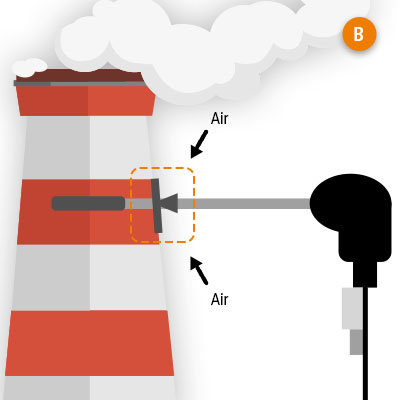
B. Appropriate Seal
The testing port for the probe should be large enough to t the probe and the sintered pre-filter if it is used. The area around the probe at the test port should be appropriately sealed. This will ensure that no gas escapes the stack in cases of positive pressure which will pose a safety hazard to the operator. In cases of negative pressure, the seal will prevent air from entering the stack and diluting the stack gas sample.
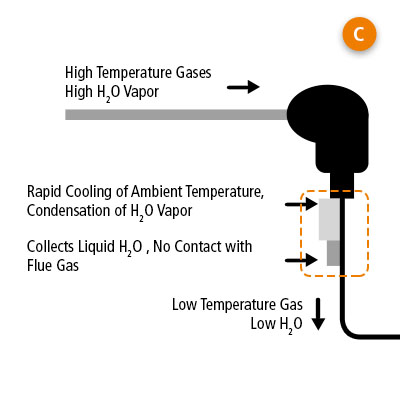
C. Sample Conditioning Unit (SCU)
Moisture in a sample may affect the accuracy of a gas measurement depending on the range of soluble gases you need to measure. Gases that are highly water soluble such as NO2 and SO2 could be absorbed in the medium, therefore reducing the readings. If these gases need to be measured at low ranges, an SCU is recommended to remove moisture directly at the probe handle so that gas integrity is maintained prior to reaching the monitoring unit. This is a critical step for accurate emissions monitoring of soluble gases, present in flue gas from industrial and commercial processes. An SCU ensures maximum gas sample integrity for those who must meet certain emissions requirements.
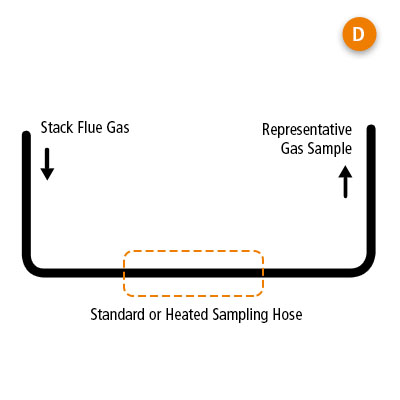
D. Standard or Heated Sampling Hose
The standard sampling hose that transfers the gas from the probe to the analyzer is constructed of material that will not react with components of the sample gas and is relatively hydrophobic. In cases where ultra-low NO2 and/or SO2 levels must be measured and/or a longer sampling hose is required (>20’/6m), a heated sampling line keeps the gas above dew point temperature from the test point to the analyzer. This minimizes condensation from occurring in the hose.
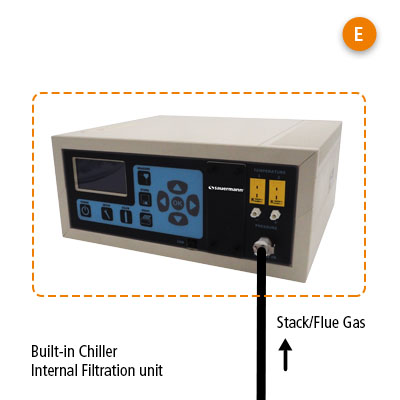
E. Additional Moisture & Dust Protection
The correct analyzer should include a powerful sampling pump to provide minimal gas residence time in the sampling hose. A thermo-electric chiller to instantly cool and dry the gas sample while automatically pumping out any condensate collected as soon as the gas enters the analyzer. Immediately after the chiller, a field replaceable internal filtration assembly should be present to remove any remaining particulates and moisture from the gas sample. This ensures that the gas sensors remain dry and are not affected by moisture or dust.
Accurate Emissions Monitoring and Sampling Solutions: Si-CA 8500
The Si-CA 8500 portable emissions analyzer can include up to nine gas sensors including O2, CO, NO, NO2, SO2, H2S, CO2, CxHy hydrocarbons & VOC as well as Low NOx and Low SO2 sensors.
Other key features available with the Si-CA 8500 include a built-in thermoelectric chiller with automatic condensate drain, internal filter assembly, sample conditioning unit, multiple probe lengths with various temperature ratings, sintered pre-filter, pitot tube for stack gas velocity analysis, real-time software package with wireless communications and automatic data logging.
